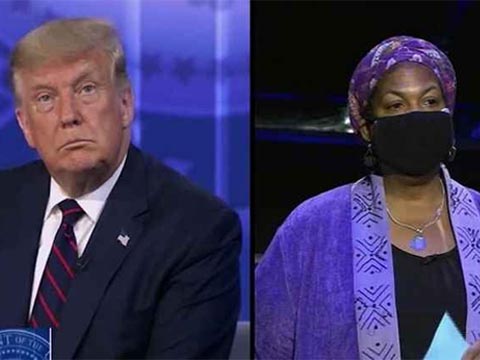
The Trump and Biden campaign rallies look different, not only in their composition but in their number of attendees.
We speculate the reasons for these structural variances and take stock of the candidates’ competing Town Halls now posed to replace the usual second presidential debate.
Trump and Biden dominate different campaign spaces. Biden rallies appear scarce, with few onlookers holding signs and masked, socially distanced reporters.
On the other hand, Trump holds rallies with large numbers of people, crowded into small spaces, and visibly animated with political fervor.
Coronavirus self-evidently explains this disparity. Biden hopes to foster dissatisfaction with the current administration and utilize the coronavirus narrative to pit Trump’s handling of the pandemic against him. Biden’s campaign almost contractually must exemplify this narrative on the campaign trail.
Thus, small distanced and admittedly outright sluggish-looking rallies.
Trump pushes a different narrative: do not let the pandemic control your life. Trump’s massive rallies with swooning Karens and MAGA hat donning advocates reflect this stance.
But maybe the pandemic plays only an auxiliary role. At face value, President Trump appears ahead and high-spirited, while Biden strikes one as lackluster. A definite enthusiasm gap exists between the two candidates that the polls overlook.
If the phrase “vote with your feet” holds any weight, then the rallies could point to a Trump lead.
Yet Biden leads the national polls against Trump by nearly 10% and holds an average 4.8% lead in swing states. This time in 2016, Hillary Clinton led in swing states by 5.1%. Moreover, Hillary arguably galvanized the Democratic voter base better than Biden does now.
The impetus of the Biden campaign relies not on rallying voters for Biden, but instead against Trump. With an inability to invigorate undecided voters on his platform, the Biden campaign depends on Trump’s America’s negative relief to motivate citizens.
Luckily for Biden, the pandemic and the recent strew of Trumpian maneuvers push undecideds to vote early via mail-in. Rather than wait until November 3rd, where the extra 20 days provides Trump ample opportunities to sway opinions, voters can act off immediate instinct.
Now, both campaigns schedule competing town halls after a canceled (or postponed) second debate.
Trump and Biden will hold their town halls on Thursday evening, both broadcasting at 8 PM. The ensuing rating war may create interesting betting lines, and we wonder how viewership will fare against the current 2020 presidential odds and polls.
The Town Hall setting creates problems for the President, though. Trump must step out of his media bubble to face questions from undecided and left-leaning voters. And we all know Trump’s strengths do not include responding to threatening questions cordially, or legitimately for that matter.
In this regard, Biden has more opportunities to address and field questions from undecideds. It also eliminates the possibility for Trump to respond to Biden’s statements directly, and more importantly, prevents the ensuing screaming match.
Sources:
Breitbart
the Guardian
